Over the years I have written about settlement of the town of Schaghticoke, Native Americans, early European immigrants, churches, and industry. It’s time to talk about schools.
New York State has provided monetary support for schools since it enacted its first public education law in 1795. Early records of the town of Schaghticoke note the appointment of school commissioners in 1796. They also recorded the “school aid” that was received from the state: 99 pounds in 1797, with 44 pounds from town taxes; 88 pounds in 1798 with the same 44 pounds from the town. But Schaghticoke had been settled by European immigrants for almost 100 years at that point, and we have no real information about schools during that colonial period. Sylvester’s History of Rensselaer County assumes that there must have been earlier schools, perhaps conducted under the auspices of the Dutch Reformed Church.
I have just found two mentions of schools before 1800 so far. In the Minutes of the Albany Common Council, published in the “Collection on the History of Albany,” Vol. 1, the schoolmaster at Schaghticoke applied for a piece of woodland in 1762. The Common Council granted this as long as he remained schoolmaster and exhibited good behavior. The other mention was in the will of Andreas Weatherwax, who died in 1780. One of the witnesses was “John Clints, schoolmaster.” Where was he a teacher?At the time there was a group of well-educated men in town as they formed the Schaghticoke Polemic Sociey, a young men’s debating society, in 1797. They met weekly and debated politics, the nature of man, religion, and other weighty matters. The group continued until at least 1820. Its records are in the New York Historical Society, and once I get there to see them, I will tell you more about the group. We also know that Herman Knickerbocker, born in 1779, a son of privilege, was at the upper end of the range of education: he studied and became a lawyer by apprenticing in a law office in Albany.
Some 18th century immigrants into town were well educated: Ann Eliza Bleecker was a novelist; Colonel Peter Yates wrote eloquent letters to the governor; Dutch Reformed minister Lambertus DeRonde wrote and spoke English, Dutch, and Latin. But Solomon Acker, who came to Schaghticoke in time to serve as a soldier in the 14th Albany County Militia in the Revolution, signed his pension papers in 1832 with an X, as did fellow soldier Richard Davenport, and the widow of another soldier, Anny Overocker. I know from reading the earliest wills from residents in the Rensselaer County records, (which means they are all from after 1790), that some of the relatives of the dead had lovely signatures, but some signed with an X, indicating illiteracy. Many times, the males could sign their names, while the women used an X- perhaps indicating that boys had a greater opportunity for education than girls. Of course we don’t know how literate the men were beyond the ability to sign their names.
Thanks to a reader of my blog, Liz Doten, I know about another early education option for students from town. Her ancestor, Abigail Kenyon (1787-1831) made a sampler when she attended the Nine Partners Boarding School in 1803. This was a Quaker co-education boarding and day school, founded in 1796, the first such school in the new nation. School girls stitched samplers as sewing was an important skill for future housewives and mothers. Abigail was the child of Benjamin and Lydia Kenyon, who were local Quakers.
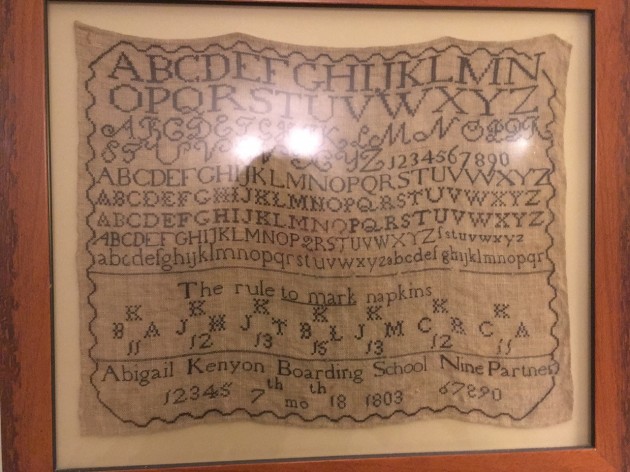
Sampler made by Abigail Kenyon (1787-1831). Owned by her descendant Liz Doten.
As I said in the first paragraph, NYS began to support public education in 1795. The universal public education law of 1812 established “common schools” for all children from age 5 to 21, grades K-8. Under the law, the towns managed schools within their borders. There were two town wide positions: school commissioner and school inspector. At least in the early years, these office holders were among the elite of the town. They included Josiah Masters, Harmon Knickerbocker, and Job Pierson, all of whom went on to become US Congressmen., and various VanVeghtens, Knickerbockers, Yates, and Groesbecks, descendants of original settlers of the town, plus well-off and/or educated newcomers like Ezekiel Baker, who was both a doctor and a lawyer.
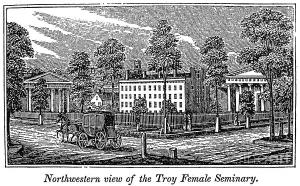
Troy Female Seminary, later Emma Willard School
One 19th century non-public school option for girls was the Troy Female Seminary, founded in Waterford by Emma Hart Willard in 1819 and later moved to Troy. I know that the daughters of Herman Knickerbacker, Bethel Mather, prominent local farmer, and Amos Briggs, major 19th century industrialist of the village, attended the school in the 1820’s and ‘30’s. Although I also know that a couple of sons of Congressman Josiah Masters attended a private boys’ school about the same time, and that other sons of wealthy or well-educated fathers probably did as well. I don’t know which one.
Sylvester’s History reports that the town school commissioners divided Schaghticoke into eleven districts in 1813, following the passage of the common school law the year before. Districts 1-4 went from the northeast corner of the town, up by Hoosick, west to the Hudson River. District 4 extended south on the Hudson to where the Hoosick River entered the Hudson. District 5 was south of District 3 and east of 4, which extended south farther than No. 3. No. 6 adjoined 5 to the east. District 7 was along the Hudson River, and 8 south of that on the Hudson, extending to the Deep Kill. District 9 was in the southeast part of town, near Pittstown and Brunswick. No. 10 was south of the Deep Kill. District 11 began south of the Hoosick River at the “Big Falls”- presumably the falls at the village of Schaghticoke. More districts were added over time. When Lansingburgh annexed the part of the town south of the Deepkill in 1819, that part of town formed school district 3 in Lansingburgh.
The town’s extant school records begin in 1839. The pages are headed “Commissioners of Common Schools in account with the Town of Schaghticoke.” Tables record the number of children, teacher money and library money for each district in the town, along with the name of the trustee for each district who received the funds. The Commissioner and Inspectors of Schools were either elected or appointed by the Town Supervisor yearly. The Commissioner appointed the Trustees of the individual districts. Of course at this point, the southern boundary of the town was the Deepkill, at Grant’s Hollow, so the records do not include Speigletown and Pleasantdale. Half of the funding for the schools came from the county, half was raised in town, from taxation based on property assessment. For example, in 1839, the town and the county each contributed about $415 to the support of the schools. There were 939 students in 17 districts. The county money was apportioned based on the number of students in each district, from $9.57 to district 13 with its 11 students to $166.90 to district 6 with its 191 students. Each district had a one-room school house, built by the residents of the district, probably through contributions of money, materials, and work on construction.
The 1840 U.S. census records the numbers of schools in town, though it differs a bit in its totals of schools and pupils. It also reports that there were only six illiterate people in the town. That seems to me to be an amazingly small number. I would have thought that some of the elderly would have been illiterate, but the six illiterates were in families with Irish surnames, indicating they were probably immigrants. By the 1850 census, when many more Irish immigrants had come to town, there were 55 illiterates. All were born in Ireland except for three English and five blacks. This indicates great success for the common school law in producing at least basic literacy in the population.
Returning to the town’s school records, they also record the names of trustees each year. Interestingly, the names vary greatly from year to year. 1839’s list is almost totally different from that in 1840. Also, one of the trustees, Nicholas Groesbeck, apparently was illiterate, signing his name with an X. Many of the names are familiar to me as prominent residents of the community, including representatives from the founding families like Groesbeck, Abraham Knickerbocker, Derick VanVeghten, and Cornelius Vandenburgh; and new and prosperous industrialists and farmers like Isaac T. Grant, founder of the mills in Grant’s Hollow; William Baucus, of Melrose, Ezra Bryan, of the Bryan District on River Road, and William Pitt Button, of Buttermilk Falls Road.
From 1845-1856, the state instituted a system where town superintendents of common schools were elected, first yearly, then biennially. The first elected superintendents were Merritt M. Wickes, Peter Wetsel, D. Bryan Baker, and Stephen Kenyon, yearly; and Henry N. Wales, Solomon VanRensselaer Miller, and Daniel Groesbeck. In the 1850 census, Wickes is listed as a 40 year-old merchant with no wife or children; Wetsel was a fairly well-off farmer, with no wife and three children; Kenyon was a 27-year-old postmaster, living in the family of Isaac Hornbrook, a young dentist; Wales was a 42-year old lawyer with a wife and four young children; Miller was a 35-year-old farmer with a wife and one child, and Groesbeck was a 30 year old farm laborer living in the family of Jacob Fort, a wealthy farmer. Baker died in 1847 at age 25, the year after he served. What a wide variety of backgrounds! I can’t draw any conclusions about who would run for that job or why from that list.
Every year the records include notes where individuals petitioned to have their properties transferred from one district to another. This was important, as school revenues depended on the taxes paid by residents, and of course children had to attend the school in the district where they lived. Apparently an effort was made to make the districts equal in number of children and amount of assessed valuation. Another concern was that the children be able to walk to school relatively easily.
In 1845, the records have a list of “Local Names of School Districts.” These are clearly based on what was common knowledge at the time, but a few are rather impenetrable to us now. The list includes the town in which the school house was located, as a number were actually not in the town of Schaghticoke. District 1, called Cotrells, and District 2, called Burch’s, were in Cambridge, at the northeast part of the town. District 3, called Masters, District 4, “Valley”, and District 5, Buckley’s, were all in Schaghticoke, and evidently came down what is Masters Street toward the village of Schaghticoke. District 6, “the Point north district”, must have been at the northern edge of the village, called “Schaghticoke Point”, or “the Point.” District 7 was “Stillwater”, though listed in the town, and must have been over toward the Hudson. District 8, “Old Schaghticoke”, would have been near the Knickerbocker Mansion. District 9 was called “Borough.” I do not know that reference. District 10 was “Grants”, I’ll assume in Grant’s Hollow. District 11 was called “Hill”, presumably Schaghticoke Hill. District 12 was “Wetsels, Northern Turnpike” and listed in the town of Pittstown. District 13 was “Powder Mills”, in Pittstown. This is confusing, as I thought the mills were still on the Tomhannock Creek in 1845. Maybe this is evidence that they had at least partially moved earlier. District 14 was “Bryans”. The Bryans lived on River Road, near where Allen Road joins it. District 15 was “New Turnpike, Hayner”. This could refer to the northern end of the modern New Turnpike Road, though it wasn’t in the town at the time. District 16 was “Point south”, back in the village of Schaghticoke. District 17 was “Pine woods”. I live off of Pine Woods Road in Melrose. I am surprised the name was used so early, and wonder if the large white pines in between Riley and Roe Roads are a remnant of that woods.
The rest of the list was added later, as new districts were created. District 18 was “New Tavern”, District 19 “C. Vandenburgh”, and District 20 “Devols”. I do not know those locations. District 21 was “Middle district, Point,” a third district in the village of Schaghticoke. The very next pages in the school records describes creation of a new district, number 18, from parts of districts 9,10,and 15 in Schaghticoke and district 3 in Lansingburgh, in the southern part of town, and number 19, from part of district 7, in the northwest part of town. There was quite a controversy about district 19. District 7 had only had 40 possible pupils to begin with, but the record states that because of bad roads and long distances to walk, only half the students were able to go to school. The new district would be small, but all of the children would be able to attend the closer school. District 20 was created from parts of districts 5 and 14 in 1850.
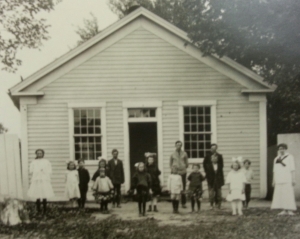
Schoolhouse at Schaghticoke Hill.
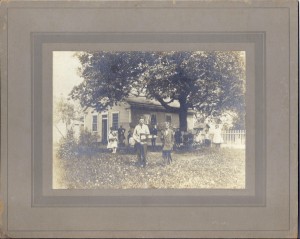
another shot of the school at Schaghticoke Hill. In this one the cemetery next door is visible.
In my files is a list of “Schools that became part of the Hoosic Valley Central School”, compiled by long-time teacher, the late Ann Hurley, in 1988 for the 50th anniversary of the district. Ann listed the location of the schoolhouses in each district. District 1 schoolhouse was at the north end of School Street in the village of Schaghticoke. District 2 school was on the west side of the junction of Stillwater Bridge Road with Brown Road. District 3 school was at the south side of the junction of Master Street with Ridge Road. District 4 was in the village. District 5 school was at the south side of the junction of Hayes and Bell Roads. Mrs. Hurley’s notes for District 6 state “Dorr-Barton-Mead; brick building overgrown with trees.” The Mead farm is up Barton Road, but unlike the others, the school house does not appear on the 1877 Beers Atlas. District 7 school was on the south side of Stillwater Bridge Road, just before the intersection with Bevis Road. District 8 is now the Williams home on Pinewoods Road in Melrose. District 10 school is now a home on the north side of Mineral Springs Road. District 9 school was on the south side of Hansen Road, west of the intersection with Sliter Road. District 12 school was on the west side of Valley Falls Road, north of the junction with Madigan Road. District 14 is the brick building at the north side of the big bend in Verbeck Avenue to the west. Mrs. Hurley did not mention it, but I believe she taught in the District 9 school, which was at the intersection of River and Allen Roads. And there was a school house on the east side of Route 40 at Schaghticoke Hill, just north of the Kingsley Arms apartments. The 1877 Beers Atlas also shows a school house on the west side of River Road, just north of the intersection of Riley Road. The school house in Speigletown is currently a dentist’s office, on the east side of Route 40, just south of the intersection with Eastover Road. It was in use as a kindergarten in the Lansingburgh School district up until 1964. Of all these schools, just three or four survive. Of course the school at the corner of Route 67 and River Road in Hemstreet Park also survives, but that is a later building and was not part of the Hoosic Valley District.
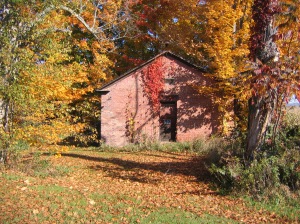
1845 schoolhouse on Verbeck Avenue
Also in my files, I have a history of district 14, on Verbeck Avenue, written by Warren Verbeck, who owned the school house until his recent death. He stated that the first school meeting was held January 15, 1824. Peter VanAntwerp, Seth Bryan, Peter Ackert, Propwell? Curtis, and Benjamin Ketcham? were elected to the board of directors. I know that VanAntwerp, Bryan, and Ackert were farmers who lived in that part of town. I don’t know about the others. A wooden school house was erected. The current brick building was built for $355 around 1845. Mr Verbeck stated that Chester Arthur taught in the original wooden building. If that is true, it must have taken a while to build the brick school, since we know he taught from 1846-1848. Several of Mr. Verbeck’s relatives served as district clerk or trustee through the 19th century. Teacher’s salaries varied from $90-$206 for 34-36 weeks of teaching. In 1919, the trustees voted to close the school. The building was used for community functions for quite a few years after that.
Returning to the story of all the schools in town, we are used to school costs constantly rising, but in 1849, the amount distributed to the schools was actually $150 lower than in 1839, dropping to just under $700, though the number of students remained unchanged at just under 950.The money jumped way up in 1850, to over $1000, with well over half the amount coming from the county. Something happened in the next couple of years to the school population as well. In 1852 there were 1375 students in 20 districts, and the total money was $1320. All but one district showed a big jump in population over 1849. Through all the years, district 6, in the village of Schaghticoke, was much larger than the others. By 1853 in had 391 pupils, and was divided into two districts. By 1874, the total number of students in town had dropped to 1165. A couple of years earlier, one Schaghticoke district was consolidated with a Pittstown district and came under the purview of Pittstown, accounting for a bit of the change. Another possible cause could be the closing of a major cotton mill during the Civil War. Numbers of children in each district varied widely, for example, from 16 in district 2 to 185 in district 16. Beginning about 1860, the amount of money paid to the schools began to be determined in part by the average daily attendance, just as it is now. There must have been a new state-wide law.
New York State enacted the Union Free School law in 1853. Under this law, common schools could organize to create secondary schools for their students. Before that time, just a few students would have the opportunity to go beyond an elementary school education, in private schools located around the area. The 1840 U.S. Census had a column for “scholars”, presumably students in college. There were none in Schaghticoke in that year, though I know that there were well-off students who attended college, for example John T. Masters, son of Nicholas Masters, graduated from Union College in 1839. His father was also a graduate.
Twenty years later, at the end of 1874, voters from districts 1, 4, and 16, located in the village of Schaghticoke, decided to consolidate, form a new district, and build a new, graded Union school on what is now called School Street. Their sole trustees petitioned the town and county on behalf of the voters to consolidate and create the graded school. They were Sidney S. Congdon, an insurance agent; Charles Albro, a tin smith and recent arrival to town; and Michael McGrath, who ran a hotel on South Main Street, in the house at the southwest end of the bridge. There were over 400 children in the three districts, certainly plenty. The building was finished by August 1876 at a cost of $12,633. McGrath continued as a trustee, joined by Lorenzo Baker, C.C. Hill, and Abram Myers. Baker was a clothing merchant and Hill a shirt manufacturer in the village. Myers a young farmer, lived where Brocks do today, across Electric Lake.
According to Sylvester’s “History of Rensselaer County,” the first teachers in the new school were Misses Florence Ogden, Lizzie Gunner, Clara Richmond, and Lottie Munger, and Professor Ira H. Lawton, from 1876-1877, followed by G. W. Gillett, from 1877-1879.. An historical chart of “Schaghticoke Schools” made in 1906 adds Mary Button, Martha Calkins, Sarah Mott, Mary Ackart, Lizzie C. Smith, and Hattie Deming. In the 1875 NYS Census, I found that Ira Lawton was a druggist in Brunswick. So he may have begun a new career here. He was gone from Schaghticoke by 1880, and a principal of a school in Rockland County in 1910. Lizzie Gunner was the daughter of local baker Richard Gunner, and just 18 years old in 1880. Miss Munger was probably Charlotte, daughter of local market gardener Morgan Munger. George Gillett, aged 30, had moved on to teach school in Saratoga Springs by 1880. Hattie Deming was from a family in Stillwater. The others I haven’t found in the records as yet.
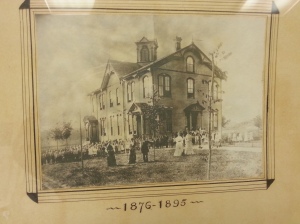
first Union Free School, 1876, on School Street, village of Schaghticoke. burned in 1895.
Unfortunately, the new school building was destroyed by fire in February 1895. A new Union Free School was swiftly completed, open for business by March 1896, at a cost of $16,400. The principal was C.W. Dunn, with teachers Misses Delia Barrows, Helen Story, Lizzie Smith, Matie Ackart, and Clara Thompson. In the 1900 census, I found Delia Barrows, 30 year old daughter of Robert and Mary, living with her parents in Canton, NY and working as a school teacher. Clara Thompson was the 27 year old daughter of Samuel and Rose Thompson of Schaghticoke. Samuel was a carpenter and Clara a teacher. They were still a family in the village in 1905. I also found Lizzie A. Smith, age 40, a vocal music teacher living in a rooming house in Pittsfield, Massachusetts in 1900. So again the teachers were a mixture of local and imported people, as is true today.
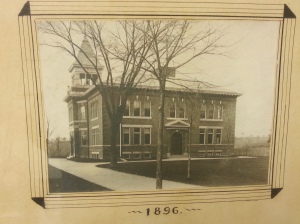
new Union Free School, built in just a few months from 1895-1896
Let’s go back and look at what the schools were like for parents, students, and teachers. Children could go to the public school from ages 4 to 21. The 1850 census, the first to list the names of all family members, also notes if a child went to school in the past year, though it doesn’t say for how long. Most children from age 4 or 5 to about 15 attended school, though many boys were working by age 15 or 16. Just a few attended school as old as 18 or 19. I’m sure it depended on the need of the family for income.
How long was the school year? Theoretically, children could go to school for nine months, as now. But children who were also working on the farm, or working in a mill, would not go that long. In records of a school in rural Guilderland, Albany County, in 1875, I found that virtually no boy over 10 attended the spring term, when farms would be busy, though their sisters did. In the Schaghticoke records, there is a note that school in district 16, with 148 students, was taught less than six months. Beginning in 1880, the number of children from 5 to 21 years of age in each district is given, along with the average daily attendance. Shockingly to us today, though the number of children in district 1, the village consolidated district, was 548 , average daily attendance was just over 162, or just about 30%. The next year, the district had 552 children, with average daily attendance up to 225, much better. But other districts in town still had very low attendance. District 13, with just eight children, had just 2 or 3 students attend daily.
From what I have seen in various sources, during the 19th century, children went to school during the winter months, with pupils from age 4 or 5 to 18 all in the same room. All of the schools in Schaghticoke would have been like this until the construction of the Union Free School, a graded school, in the village of Schaghticoke in 1874.The earliest teachers were young males, and sometimes had not much more education than their students. They made very little money, and lived with the family of one of their pupils. Often teaching was a job for a young man on the way to something better. The most famous teacher in all of Schaghticoke history was Chester A. Arthur, who taught school in the Verbeck Avenue during his winter vacations of 1846 and 1847, while he was a student at Union College in Schenectady, and the fall after he graduated in 1848, for $15 per month. Of course he went on to be President of the United States. I will write more extensively about him at another time.
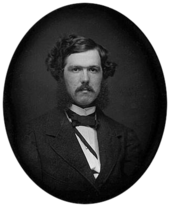
Chester A. Arthur taught at the Verbeck Avenue school during vacations from Union College
Sylvester’s 1880 “History of Rensselaer County” quotes an “aged resident” Nicholas Bratt, who moved to the Masters street area in 1790 at age 12. He stated that James Mallory was his teacher, along with a woman who was “a widow who had never married.” James Mallory was a surveyor in the county, whom I know because he made the earliest map of the village of Schaghticoke about 1825. I would that the woman could have been a spinster who was called “Mrs” as a term of respect. I had colleagues when I taught who were called “Mrs” though unmarried, partly because children were used to calling older women “Mrs.” I’m interested that Nicholas had a woman teacher at that early date.
In summer 2014, the tombstone of Abel Spalding Read was unearthed in the rebuilding of the bridge over the Hoosic River on Route 40. This prompted me to research him. He was born in Massachusetts in 1798, moved to town by 1815, and was listed as a school teacher from at least 1830 to 1850. He’s the first career teacher I know of in town, and breaks the mold of teachers as young men. I would love to know more about where he taught, and if he went beyond being the teacher in the one-room school. While there must have been at least twenty teachers in town in 1850, only Abel Read and one other, Henry Keefer, age 24, were captured by the federal census that year, further indication of the temporary nature of the profession. Henry still lived in town in 1855, when the census listed him as a student. He may have been in the mold of Arthur, attending college and teaching at the same time.
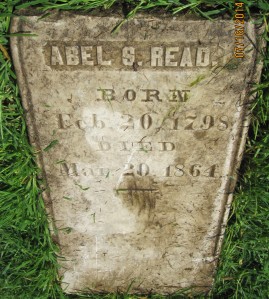
tombstone of Abel Read, part of DiFranzo’s front walk. He was a teacher in town for at least twenty years.
According to a PBS article on schools, women began to teach by about 1840. As the population and the demand for teachers grew, there were just not enough men teachers available. As the following quote shows, there were a couple of motivations for hiring women: “God seems to have made woman peculiarly suited to guide and develop the infant mind, and it seems…very poor policy to pay a man 20 or 22 dollars a month, for teaching children the ABCs, when a female could do the work more successfully at one third of the price.” This is a quote from the Littleton School Committee, Littleton, Massachusetts, 1849. One of those woman teachers was Susan B. Anthony, future woman’s rights leader, who taught school in the Greenwich area as a teenager. In general, girls went from finishing school at 16 or 17 to teaching the same children a year later. They could face a room of up to 60 children of all ages and behaviors. They usually just taught for a couple of years, until marrying. In fact for many years marriage disqualified women from teaching. In the 1970’s I taught with an older woman who concealed her marriage from her supervisor for a couple of years, until it became accepted for her to be a married teacher.
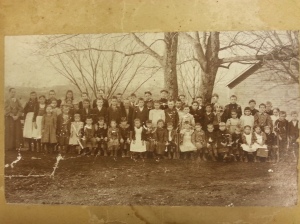
students at the Melrose school, c. 1901. Just one teacher??
The 1855 NYS Census lists five teachers in Schaghticoke, four female, one male, a great confirmation of the preceding paragraph. The females were Celia Baucus, 21, who lived in the family of Michael Overocker; Mary Wilson, 20, who lived in the family of Lewis Buffett; Emily Gordon, 20, who lived with her widowed mother; and Sarah Harwood, 39, who lived in the family of Edwin Smith. I feel Sarah was a widow. The man was L.T. Hardy, born in Connecticut, who lived in Walter Groesbeck’s tavern. Five years later a L.S. Hardy, now with a wife and infant, was principal of the Union School in Brutus, Cayuga County, New York. This may be the same man. If so, Hardy had stayed in the profession, but advanced to administration.
What did children learn in the mid-19th century schoolhouse? The curriculum was very basic: reading, writing, simple arithmetic, and a bit of geography and history, plus elocution or public speaking, and morals. Most used Noah Webster’s “Blue Backed Speller,” first published in 1783, and McGuffey’s Reader, first published about 1840. Webster was interested in differentiating American from British spelling. McGuffey’s Reader includes simple stories. The goal was basic literacy, to have a populace qualified to vote. As immigrants came to town, they would be “Americanized” by the schools. As the 1800’s went on, classes in art, music, and science were added. By the time the Union Free School law was enacted in 1874, school reform was really under way. There was a recognition that students needed a much better education to succeed in an increasingly complex society. And as the 20th century approached, teachers were better educated, more and better classes were added, and school became more like something we would recognize today.
I’m sure that many readers are saying to themselves, “Where is the information about the schools when I attended them?” I know there is much more to the history of what became the Hoosic Valley Central Schools. I am stopping here for now, as I am trying to write this week-by-week history of the town chronologically, and I’m getting ahead of myself as it is. Also, I have much more work to do on the rest of the story: examining how the centralization happened, doing oral history projects with residents who attended the last one-room-schools and transitioned to the central school, etc. Some of this work was done for the 50th anniversary of the district in 1988. If YOU have photos of one-room schools and their classes, I would love to copy them. Contact me at home: 235-5813 or email historian@townofschaghticoke.org. Thanks in advance!
Sources for this series on schools include: the school records of the town of Schaghticoke, census, Sylvester’s “History of Rensselaer County,” my files, online articles on schools, county maps of 1856 and 1877.










My family lived on Avenue A in Melrose from 1951 to 1956. I attended 1st, 2nd, and 3rd grades at the District 10 school on Mineral Springs Road, 1953-56. One room, one teacher (Mrs. Ralston), four grades, an average of 30 students altogether. There was no kindergarten then, nor was there one when my mother attended the same school, 20-some years before me, for grades 1-8. I would like to point out that the building is on the north side of Mineral Springs Road, not the south. The old schoolyard fence can still be seen in the Google Street View image taken in September 2014. I discovered your site by searching for information on Melrose. Thank you for doing this and I look forward to learning more about the era closer to my own time there.
Mike- thanks so much for correcting the location. I know very well where the school is, just made an error. I actually have the bell that was in the school….did you ever ring it?
You have the bell! That’s wonderful. Yes, I rang it, probably many times. I just posted my own reminiscences of my time there on mikehonan.wordpress.com Linked to your page, too. Thanks.
Hi! I was wondering if along your research you ever encountered anything about Abigail Kenyon. She went to School #9 and was there in 1809 I believe. She was my 4th great grandmother and I would love to know more about her. The reason I know about her school is she created a needlepoint with her letters and numbers and that information was on it. The needle point hangs in my living room. I love it and feel very attached to her because of it.
Hello- I am so interested to hear about your grandmother, especially at that early date. As I understood it, the common schools weren’t established until 1812- so I wouldn’t have thought the districts were numbered before that. I don’t have records of Abigail as of 1809, though there were several Kenyon families in town at the time. I would love to see a photo of the needlepoint! Perhaps you could email one to my town address? historian@townofschaghticoke.org Thanks
I’d love to see the photo of the needlepoint she did as well. Not sure after all these years you might still have the photo.
I do have the photo- but I don’t think I can insert it in a reply. If you email me at historian@townofschaghticoke.org, I will send it to you.
I’ve just joined this blog, and… what a rich resource! I hope you’re going to collect these posts into a book at some point. Especially for those with ancestors from this area, the research you’re doing and sharing is an invaluable glimpse into their past. It would be lovely to have it collected into one or more volumes at some point. Thanks you so much!
thanks Deb. The plan is eventually to publish a history- I have been publishing what I have written in columns in the local newspaper first, then putting it on the blog. I have a year’s worth of columns about Schaghticoke c. 1900 ready to post, and am in the midst of writing about the town c. 1920- . I have also written two other long works- one on all of the men with a connection to Schaghticoke who served in the Civil War, and one on the men and women with a local connection who served in World War I. I have been posting the former on the blog bit by bit for the past year.
I am trying to find out more information on a teacher that taught at Schaghticoke High School in 1929. Her name was either Wilhelmina (Minnie) Van Essen or her married name of Mrs. Robert
Sickler. I’d like to find out how long she taught, what grade(s) and any other information you could provide. I am doing research as a trustee for the Ravena Coeymans Historical Society’s museum.
Hello, I have no records of the local schools. Schaghticoke High School is Hoosic Valley HIgh School, Schaghticoke, NY 12154. I am not sure if they have any personnel records from before the district became a central school in 1938, but you could try to contact them. The district office is at Pleasant Ave, Schaghticoke. I have found Wilhelmina as a teacher in Albany, as you probably have, but cannot find her after 1920. I assume you use fultonhistory.com- I had no luck there. The local newspaper does not exist for the period we need for this search. Sorry !
Knickerbocker Press, June 26, 1926: MISS VAN ESSEN HONORED
Sergeant and Mrs. Thomas Smart Give Dinner for Bride-to-Be
Sergeant and Mrs. Thomas Smart of 9 Wilkins Avenue
entertained at dinner last night in honor of Miss Minnie Van Essen, whose marriage to Robert Sickles of Coeymans will take place late this month. Covers were laid for eleven. The color scheme of pink and white was carried out in both place cards and floral decorations. A feature was a variety shower for Miss Van Essen. Guests included Mr. and Mrs. George B. Lidzy, Miss Lulu Livingston, Miss Davia Fortanier, Miss Elizabeth Fortainer, Miss Margueritte Hollenbeck, Miss Minnie Van Essen, and Miss Gareldine Van Essen
https://www.familysearch.org/tree/person/details/GW57-GZX
I will attach other newspaper articles in the MEMORIES section of that site for you.
Hello- thanks- !
Hello, I have to reply again- I totally missed the married name of Wilhelmina in your comment- I see it now. It is, of course Sickler. I do find her in the 1930 and 1940 census and her burial in Albany Rural in 1943- but if she was in Schaghticoke in 1929, it must have been brief- as she was not listed with an occupation in the 1930 census. As you know, her obituary mentions that she taught at Ravena Coeymans for 25 years.